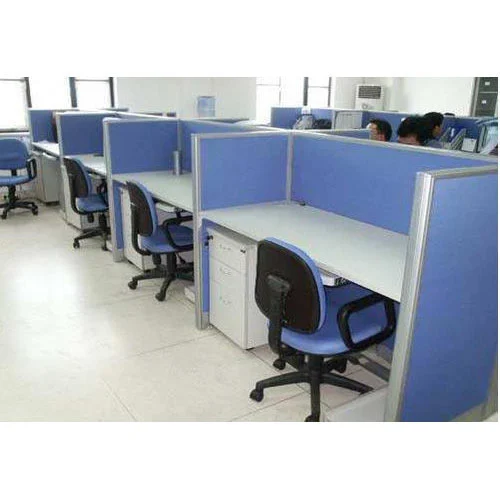
The traditional office setup of isolated cubicles is quickly being replaced by open, dynamic workspaces designed to enhance interaction and innovation. At the heart of this transformation are modern office workstations — flexible, ergonomic, and tech-friendly setups that encourage teamwork while respecting individual focus time.
The Shift Toward Collaborative Workspaces
Why Traditional Workstations Are Becoming Obsolete
Outdated office layouts often promote isolation, restrict communication, and lead to disengagement. Static workstations can stifle creativity and make it harder for employees to share ideas freely.
The Rise of Flexible Workstation Solutions
Modern businesses are embracing adaptable office workstations that promote spontaneous interactions, easy reconfiguration, and multipurpose use. This shift reflects the growing demand for collaborative environments that prioritize both employee comfort and productivity.
Benefits of Collaborative Office Workstations
Enhanced Team Communication
Open and flexible workstations make it easier for team members to exchange ideas, seek feedback, and solve problems in real time, improving project outcomes and decision-making speed.
Greater Innovation and Creativity
Workspaces designed for collaboration encourage brainstorming sessions, impromptu discussions, and cross-departmental teamwork, fostering a culture where innovation thrives.
Improved Employee Morale
Work environments that balance teamwork with personal space create a sense of inclusion and support, increasing job satisfaction and reducing employee turnover.
Space Optimization
Shared office workstations maximize the use of available office space, eliminating underutilized areas and allowing for versatile work zones that can be adjusted as needed.
Key Features of Collaborative Workstation Designs
Open-Plan Layouts
Open spaces with minimal barriers between desks promote transparency, easy communication, and a sense of community among employees.
Modular Furniture
Desks, chairs, and storage units that can be easily moved and reconfigured accommodate different team sizes, projects, and work styles.
Integrated Technology
Modern workstations are equipped with built-in power outlets, charging docks, and cable management systems to support a seamless tech experience during collaborative tasks.
Multi-Use Work Zones
Breakout areas, meeting pods, and standing desks complement traditional workstations by providing spaces for focused work, casual meetings, and social interactions.
How Office Workstations Shape Workplace Culture
Promoting Transparency and Trust
When physical barriers are reduced, it naturally encourages openness and honesty. Employees feel more connected to leadership and each other, improving workplace relationships and morale.
Encouraging a Sense of Community
Thoughtfully arranged office workstations foster a culture of inclusion, where every team member feels part of a shared mission and environment.
Supporting Flexible Workstyles
Not every employee thrives in the same environment. Offering varied workstations, from collaborative pods to quiet corners, shows respect for diverse work preferences and boosts overall job satisfaction.
Practical Tips for Designing Collaborative Workstations
Understand Employee Needs
Survey your team to determine their preferred working styles and how they interact with colleagues. Use this feedback to guide workstation design and layout.
Maintain a Balance Between Open and Private Spaces
While collaboration is important, privacy and quiet areas for concentrated work are equally vital. Design your space to accommodate both.
Invest in Ergonomic and Adjustable Furniture
Ensure that every office workstation provides adjustable seating, desk height, and monitor placement options to support employee health and comfort.
Prioritize Lighting and Acoustics
Good lighting reduces eye strain and energizes the workspace, while acoustic solutions like panels and dividers control noise without isolating team members.
Challenges of Collaborative Workstations and How to Overcome Them
Managing Noise Levels
Open layouts can sometimes get noisy. Use sound-absorbing materials, quiet zones, and etiquette guidelines to maintain a productive sound environment.
Preventing Distractions
Too much interaction can lead to reduced focus. Clearly define areas for collaborative work and quiet zones to help employees choose their environment based on task requirements.
Ensuring Fair Workspace Access
When adopting hot-desking or shared workstations, implement fair booking systems and clear policies to prevent conflicts over preferred spaces.
Future Trends in Office Workstation Design
Activity-Based Working
This approach allows employees to move between different workstations depending on the task, whether it’s a brainstorming session, video conference, or deep-focus work.
Smart Workstations
Integration of IoT devices enables desks to remember individual ergonomic settings, track usage patterns, and offer productivity insights.
Sustainable Office Design
Eco-conscious businesses are opting for office workstations made from recycled materials and investing in energy-efficient lighting and ventilation systems.
Biophilic Design
Incorporating natural elements like plants, natural light, and wood textures creates healthier and more inspiring work environments.
Frequently Asked Questions
Why are collaborative workstations important?
They encourage communication, teamwork, and idea sharing, improving both productivity and workplace culture.
Can open office workstations reduce productivity due to noise?
While open layouts can increase noise, smart design choices like acoustic panels and designated quiet zones help maintain focus without sacrificing collaboration.
How do ergonomic workstations support collaboration?
Ergonomic furniture ensures that employees remain comfortable during extended discussions or teamwork sessions, reducing fatigue and promoting engagement.
What are activity-based workstations?
These are specialized work areas designed for different tasks — from private focus zones to open collaboration spaces — allowing employees to choose where they work based on activity.
How do modern workstations affect employee retention?
Providing comfortable, flexible, and collaborative workspaces makes employees feel valued, increasing satisfaction and reducing turnover.
Conclusion
Modern office workstations play a pivotal role in shaping company culture, employee well-being, and operational efficiency. By investing in adaptable, ergonomic, and collaborative workspaces, businesses can foster stronger teamwork, inspire innovation, and create an environment where employees feel motivated to perform their best.
Incorporating a mix of open-plan desks, private areas, and technology-integrated solutions ensures that every employee can thrive, whether collaborating on a group project or focusing on individual tasks.
If you’re ready to modernize your workplace, start by reimagining your office workstations — because when your people work better, your business performs better.











